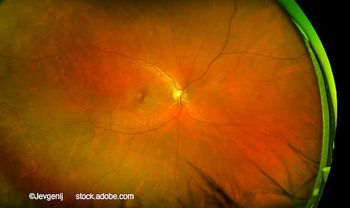
Patients prefer bimatoprost in bilateral comparison study
Charleston, SC-By implementing a different treatment regimen in each eye of patients with glaucoma, Alfred M. Solish, MD, found that not only does bimatoprost (Lumigan, Allergan) appear more effective than travoprost (Travatan, Alcon Laboratories) for reducing IOP, but also when given a choice of treatment, patients tend to prefer bimatoprost for that reason. Dr. Solish presented the results of that analysis in a poster at the American Glaucoma Society annual meeting.
Charleston, SC-By implementing a different treatment regimen in each eye of patients with glaucoma, Alfred M. Solish, MD, found that not only does bimatoprost (Lumigan, Allergan) appear more effective than travoprost (Travatan, Alcon Laboratories) for reducing IOP, but also when given a choice of treatment, patients tend to prefer bimatoprost for that reason. Dr. Solish presented the results of that analysis in a poster at the American Glaucoma Society annual meeting.
"Ever since I was first in practice, I have performed my own evaluations of new drugs," said Dr. Solish, in clinical practice with Southern California Glaucoma Consultants, Pasadena, CA. "Whenever a new drug comes out, I provide patients with samples and keep track of everyone I put on it. Once 40 or 50 patients have been treated, I'll pull the charts, take them home, and spend a few hours looking them over. It's labor-intensive because I do it all myself, but I've found some interesting things this way."
Dr. Solish believes that this collection of data is important to his practice. He pointed out that the research performed for FDA approval purposes does not tell physicians how the drug is going to perform in a real-world clinical setting, primarily due to variables present in everyday patients that are excluded from a controlled environment. The idea for a prospective comparison of bimatoprost and travoprost came about because the two drugs were released on the same day, he continued.
Between March 2001 and January 2002, Dr. Solish tracked patients with glaucoma or ocular hypertension and uncontrolled or poorly controlled IOP in both eyes who were given bimatoprost 0.03% or travoprost 0.004%.
After treating approximately 300 patients, Dr. Solish found that not only were both agents potential substitutions for latanoprost (Xalatan, Pfizer Ophthalmics) in patients with suboptimal response to treatment, but compared with travoprost, bimatoprost lowered IOP a greater amount, and more often hit the predetermined target IOP.
As part of this initial study, when both eyes had poorly controlled IOP, Dr Solish prescribed travoprost in one eye and bimatoprost in the other. Dr. Solish realized he had not employed randomization and began a new comparative study, randomly selecting the treatment to the eyes and collecting follow-up information while blinded to the treatment used for each eye. Latanoprost was also added to the bilateral comparison.
Data from 55 patients were gathered over a period of 2 years and analyzed. The study population had a mean age of 67 years and had been living with glaucoma for a mean of 9.4 years. Diagnoses included chronic open-angle glaucoma (54.5%); ocular hypertension (25.5%); low-or normal-tension glaucoma (12.6%); pigmentary (7.3%); narrow-angle glaucoma (7.3%); chronic angle-closure glaucoma (3.6%); neovascular glaucoma (1.8%); and suspicion of glaucoma (1.8%).
Among patients, 34.5% were already using two or more topical glaucoma medications, and 41.8% were already on monotherapy. Previous medications included latanoprost (58.2%); brimonidine/ adrenergic agonist (20%); dorzolamide/ timolol combination (18.2%); timolol/beta blocker (18.2%); dorzolamide/carbonic anhydrase inhibitor (9.1%), travoprost (1.8%); and carbachol (1.8%). Thirteen patients (23.8%) were on no prior treatment regimen.
Patients entering treatment were randomly selected to receive bimatoprost in one eye and either travoprost or latanoprost in the opposite eye (only five patients were treated with latanoprost, a number too few to reach significance upon analysis). Follow-up was scheduled 4 to 6 weeks after treatment initiation, at which point the change in IOP for each eye was measured, patients were debriefed and given a choice as to which medication they wished to continue with.
As in the previous unrandomized study, Dr. Solish found that while both bimatoprost and travoprost significantly reduced IOP from baseline values (p <0.0001 and p = 0.009, respectively), bimatoprost provided a greater IOP decrease than travoprost, although the difference was not statistically significant (p = 0.230). He said that the study is limited in that only one IOP measurement was taken per patient and readily concedes that multiple measurements would be preferable if not for practical considerations regarding clinical practice management.
Newsletter
Don’t miss out—get Ophthalmology Times updates on the latest clinical advancements and expert interviews, straight to your inbox.



















































.png)


